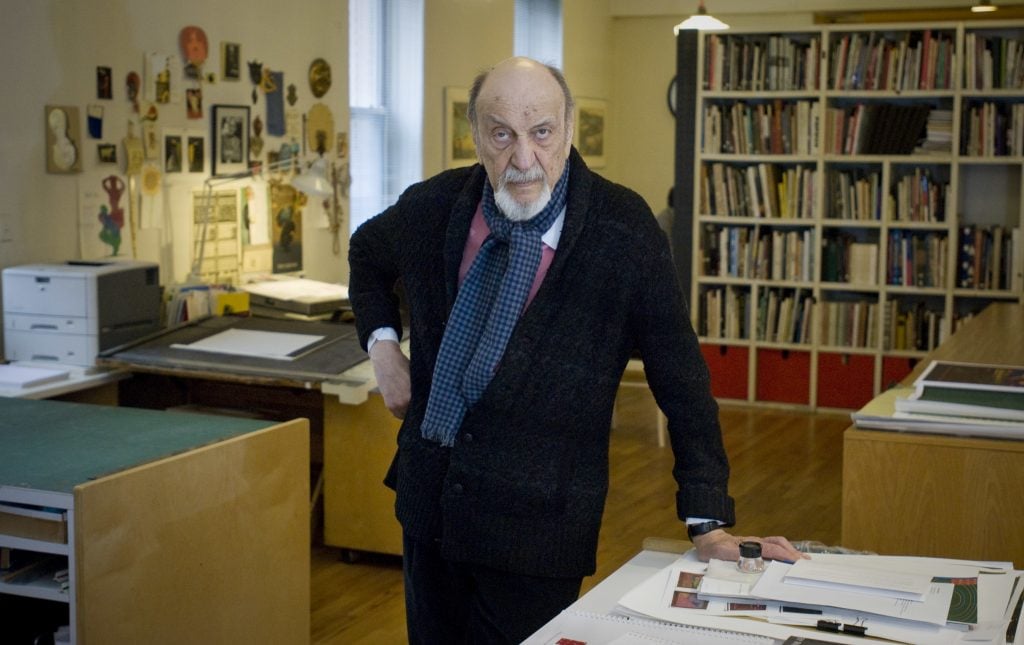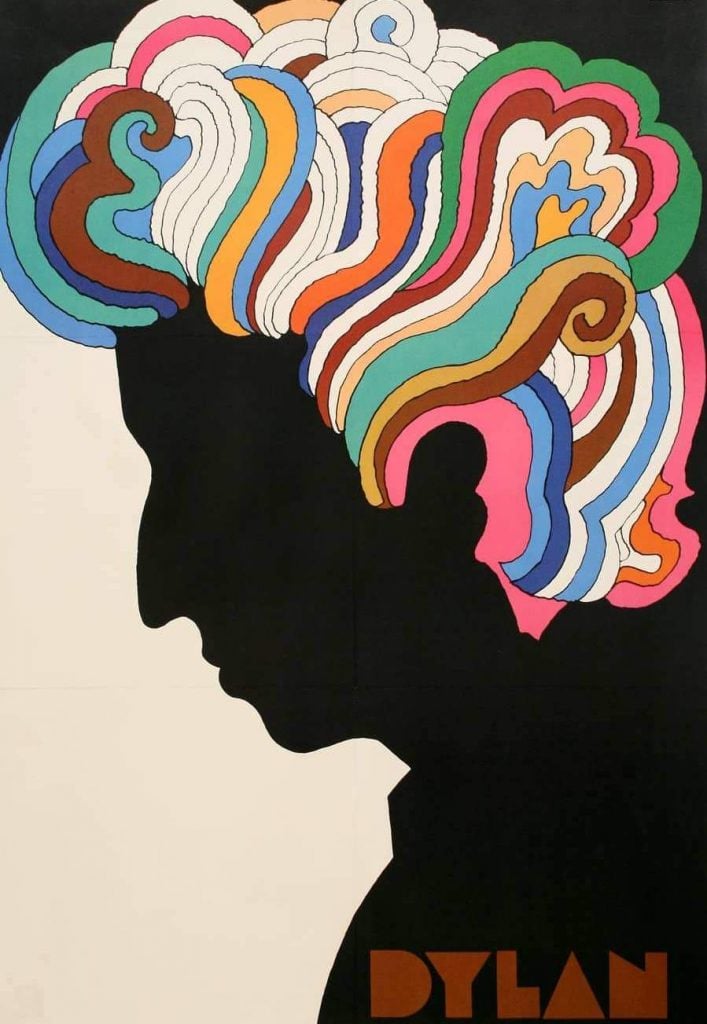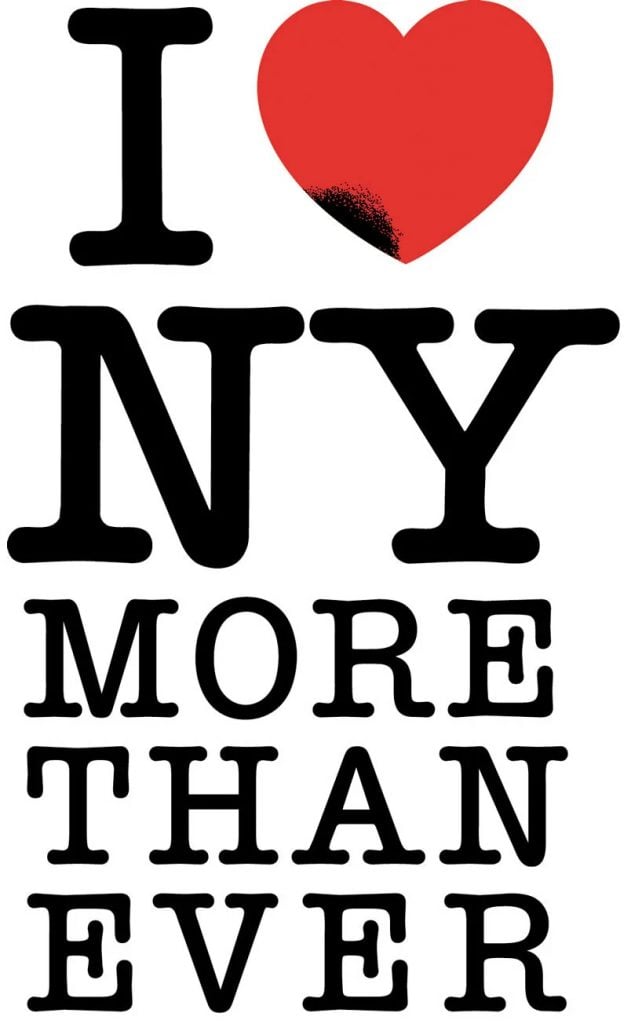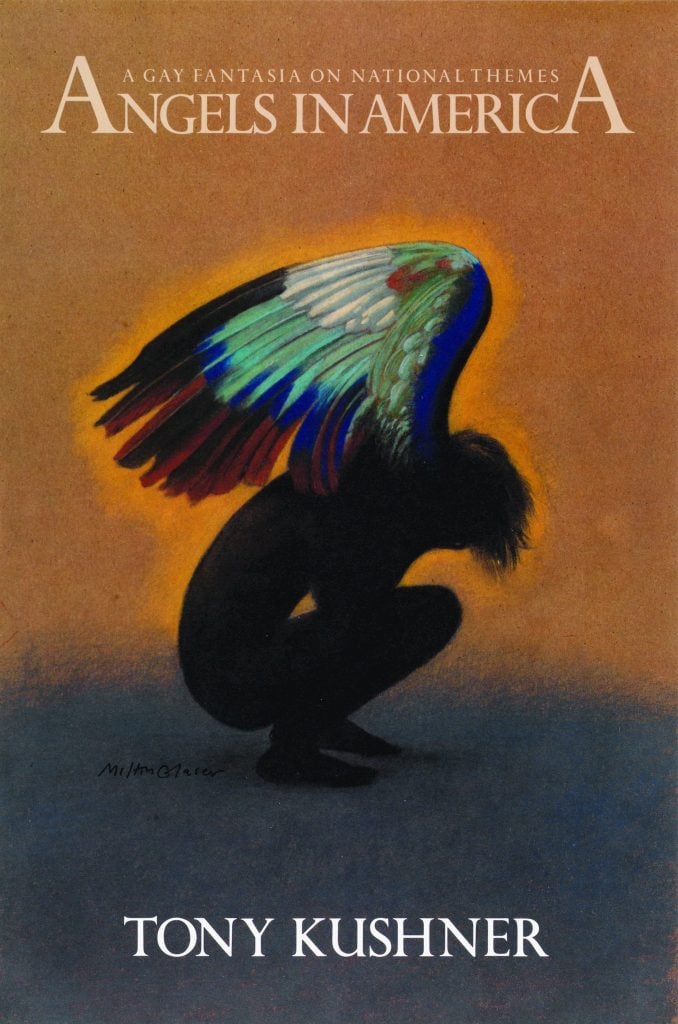People
Legendary Graphic Designer Milton Glaser, Who Created the ‘I Love New York’ Logo During a Fateful Cab Ride, Has Died at 91
Glaser is also a cofounder of New York magazine.

Glaser is also a cofounder of New York magazine.

Sarah Cascone

Milton Glaser, one of the world’s most famous graphic designers, died of a stroke on Friday, his 91st birthday. His most enduring design was the iconic I ♥ NY logo, introduced as part of an effort to promote tourism in financially troubled New York in 1976.
“I am deeply saddened to hear of the passing of Milton Glaser, a lifelong New Yorker,” said New York Governor Andrew Cuomo in a statement. He noted that the logo was “perfect at the time he created it and remains so today. We lost a brilliant designer and great New Yorker.”
The artist’s wife, Shirley Glaser, confirmed his passing to the New York Times, noting that he was also suffering from renal failure. The couple lived in Manhattan and Woodstock, New York.
Born in the Bronx in 1929, Glaser was attracted to art from an early age, when an older cousin who was babysitting offered to show him a bird, and then drew one on a paper bag.
What Milton Glaser gave to New York will long survive him.
I❤️New York was the perfect logo at the time he created it and remains so today.
We lost a brilliant designer and a great New Yorker.https://t.co/LNRPNcHzou
— Andrew Cuomo (@NYGovCuomo) June 27, 2020
“I almost fainted with the realization that you could create life with a pencil. And at that moment, I decided that’s how I was going to spend my life,” Glaser told Inc. in 2014. “And as it turns out, that’s how I have spent my life.”
Glaser began taking life drawing classes at 12 years old. Later, he studied at what is now Fiorello H. LaGuardia High School of Music & Art and Performing Arts and Cooper Union, both in New York, before receiving a Fulbright scholarship to the Academy of Fine Arts in Italy.

Mugs with Milton Glaser’s I ♥ NY logo are offered for sale in a souvenir shop. Photo by Christina Horsten/picture alliance/dpa/Getty Images.
Upon returning to New York in 1954, Glaser founded the graphic design firm Push Pin Studios, known for embracing all manner of design influences, with three fellow Cooper Union grads.
“Art Nouveau, Chinese wash drawing, German woodcuts, American primitive paintings, the Viennese Secession and cartoons of the ’30s were an endless source of inspiration,” said Glaser in an interview for the 2004 book The Push Pin Graphic: A Quarter Century of Innovative Design and Illustration. “All the things that the doctrine of orthodox modernism seemed to have contempt for—ornamentation, narrative illustration, visual ambiguity—attracted us.”

Milton Glaser, Dylan (1967), a promotional poster for the album Bob Dylan’s Greatest Hits. Courtesy of Milton Glaser.
In 1967, Glaser created one of his most enduring designs in the promotional poster for the album Bob Dylan’s Greatest Hits. Inspired by a simple Marcel Duchamp self-portrait in silhouette, he drew the singer in profile, black and white but with a colorful profusion of wavy, cascading curls, which evoked the visual effects of psychedelic drugs.
“It took on a life of its own, showing up in films, magazines, whatever,” Glaser recalled in 2001, speaking to the Times. “It did not die, as such forms of ephemera usually do.”
New York’s Museum of Modern Art acquired the work as a gift from Glaser in 1983, one of 22 pieces by the artist in MoMA’s collection. The museum also owns several versions of “I Love NY,” including the original sketch for the concept.

Milton Glaser’s updated I ♥ NY logo (2001). Courtesy of Milton Glaser.
Glaser created that legendary design pro bono, scrawling the message on a torn envelope in red crayon during a taxi ride. He never anticipated the enduring appeal of the work, which has been appropriated and reimagined countless times in the decades since its creation—including by Glaser, who created a moving sequel in the aftermath of the 9/11 attacks. (The state threatened to sue him for copyright violation.)
“To this day I can’t walk down the street without seeing it four, five, six times,” Glaser told Gothamist in 2017. “Partly I think it endures because it was never just a marketing device, even if it was part of a campaign to promote tourism. It was an expression of how people felt about New York during a very, very tough time in the late ’70s. We wanted to let the world know that we still loved this city. It was emotional, and it was real.”

Milton Glaser poster promoting the launch of New York magazine (1967). Courtesy of Milton Glaser.
But even for an artist of Glaser’s stature, following up on such well-known efforts could be intimidating. “There’s an enormous pressure to repeat past successes. That’s a sure death,” he told the Washington Post in 1969.
Nevertheless, wrote Christopher Bonanos in Glaser’s obituary in New York magazine, “he just kept hitting the bull’s-eye, again and again, throughout his seven decades as an illustrator, graphic designer, art director, and visual philosopher and paterfamilias.”
Glaser helped found the current iteration of New York magazine in 1968 with Clay Felker. He designed its logo and served as the president and design director until 1977, when Rupert Murdoch forced the founders out during a hostile takeover. Glaser co-created the magazine’s groundbreaking “The Underground Gourmet” column, celebrating cheap international cuisine.

Milton Glaser’s AIDS logo for the World Health Organization (1987). Courtesy of Milton Glaser.
Other well-known designs by the artist include the AIDS logo for the World Health Organization (1987), the Brooklyn Brewery logo (1988), the playbill for Tony Kushner’s play Angels in America (1993), and the promotional art for the seventh and final season of television series Mad Men (2014).
With his wife, née Shirley Girton, whom Glaser married in 1957, he wrote the children’s books If Apples Had Teeth (1960), The Alphazeds (2003), and The Big Race (2005).

Milton Glaser’s playbill for Tony Kushner’s Angels in America (1993). Courtesy of Milton Glaser
Glaser also helped design several restaurants, including New York’s Rainbow Room and Windows on the World, at the World Trade Center. In addition to MoMA, Glaser’s work can be found in the collections of the Israel Museum in Jerusalem and the National Archive and Smithsonian Institution in Washington, DC.
His long and illustrious career was recognized with a a lifetime achievement award from the Cooper-Hewitt National Design Museum in 2004. Then-President Barack Obama awarded Glaser the National Medal of Arts in 2009. He was the first graphic designer to win the honor.

Graphic Designer Milton Glaser’s I ♥ NY, designed for a New York tourism campaign in 1977, now greets arrivals at baggage claim at the new LaGuardia Airport terminal in New York City. Photo by Sarah Cascone.
Most recently, Glaser was one of over 30 artists and designers that created artwork honoring essential workers for “Messages for the City,” a public art installation across the New York from Times Square Arts and Poster House.
Two new sculptures featuring the I ♥ NY logo were unveiled at the city’s new LaGuardia Airport terminal earlier this month.